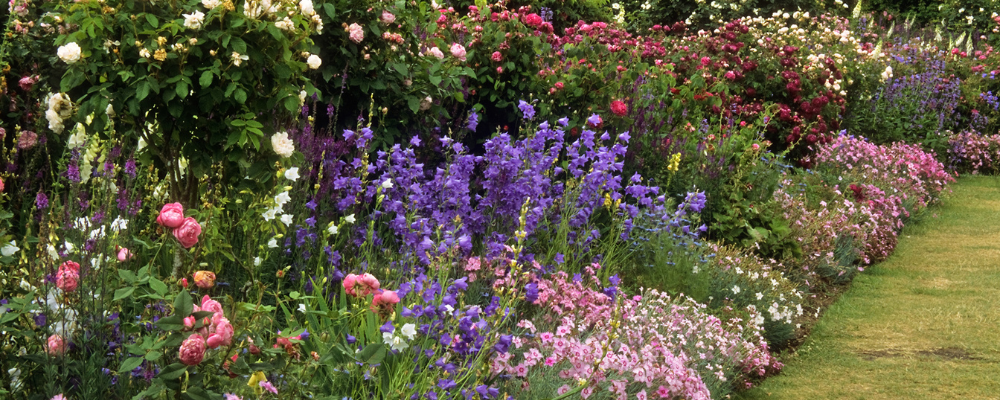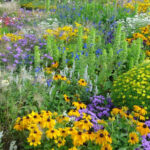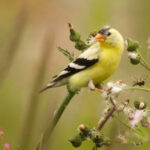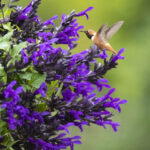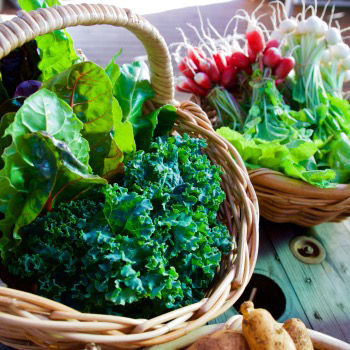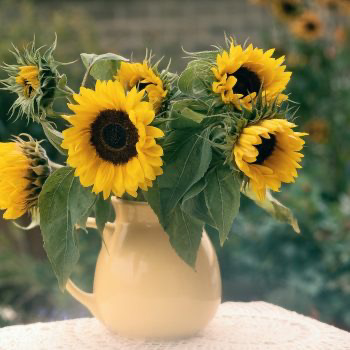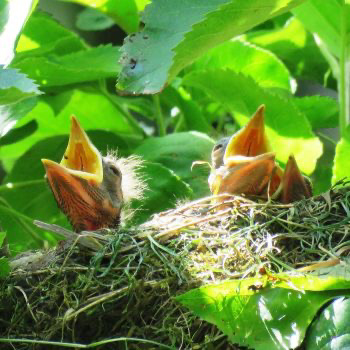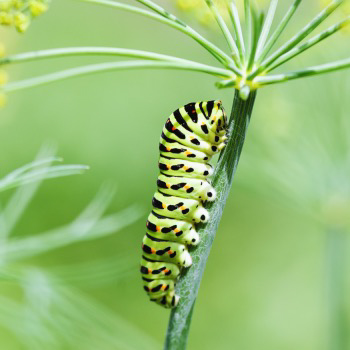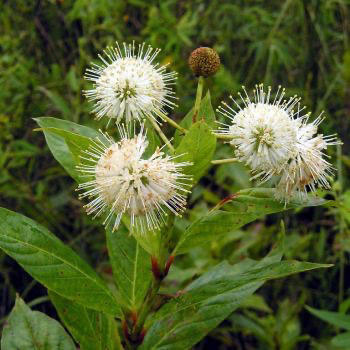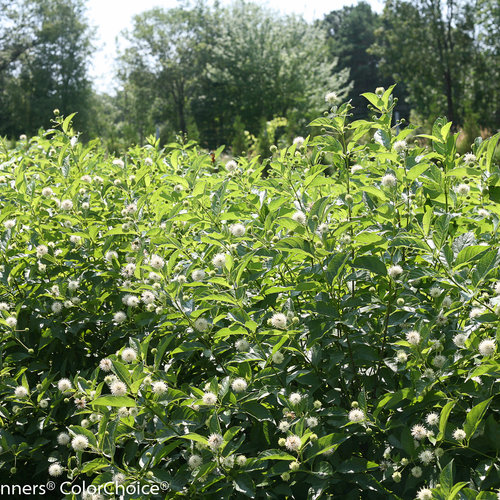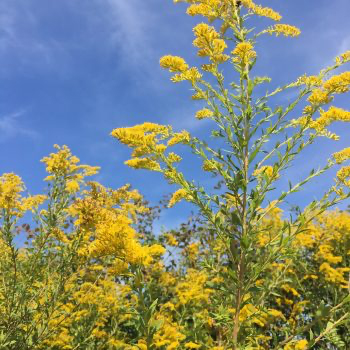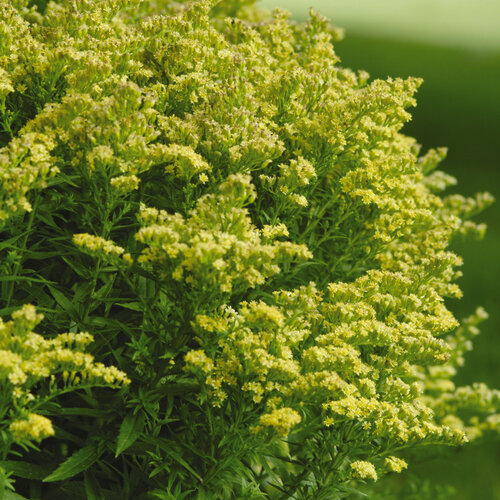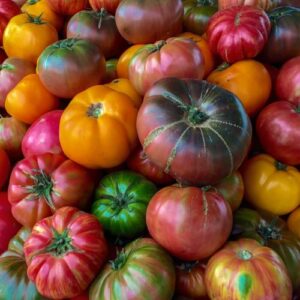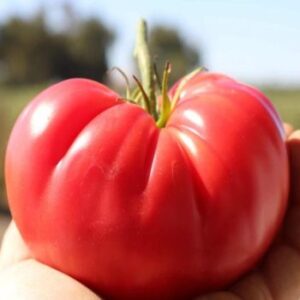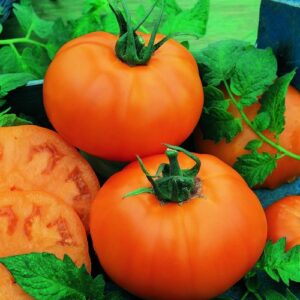Why do you grow a garden? Do you love creating beautiful, homegrown bouquets to enjoy on your kitchen table? Do you savor the delicious flavor of sun-warmed tomatoes in a BLT? Do you enjoy watching hummingbirds flit through the flowers? Or maybe you eagerly await the first brilliant bloom of daffodils after a long, gray winter.
Most of us relish our gardens for many reasons: tasty food, fabulous flowers, lovely landscapes, serene settings and wildlife wonderlands.
A diverse garden filled with flowers, food, native plants and cultivars creates beauty and joy.
But what if you’re filled with environmental angst, reading articles or following Instagram accounts that promote only native plants as garden-worthy? Caring for the environment is a legitimate concern. But you don’t have to forgo your favorite food and flowers to create a biodiverse, rich garden that satisfies your yearning for sweet strawberries or sublime garden design.
Creating a garden filled with diverse, interesting, beneficial plants provides a healthy, balanced habitat — and a joyful space that gives you pleasure.
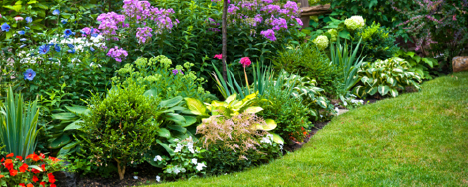
Why create a diverse garden?
If you’ve built a new home or seen the nearly overnight rise of subdivisions in your area, you’ve likely noticed the cookie-cutter landscapes installed by developers: a few meatball shrubs, a tree or two, and lots of lawn. Not only are these landscapes uninteresting, but most also offer little environmental benefit.
Instead, creating a garden using diverse, attractive plants makes both the environment and the homeowner happier. Gardens filled with pollinator-friendly flowers and foliage add multi-season texture and color to the landscape. They also provide a home for wildlife and an engaging, pleasurable place to enjoy all year long, both for you and your wild neighbors.
And, of course, growing your own fresh food and cut flowers not only adds to a joyful garden, it also reduces your carbon footprint. There are plenty of reasons to grow a diverse garden.
- Increase biodiversity. Growing diverse plant species promotes biodiversity. Much like farmers practice crop rotation to ensure healthy soil and plants, growing a diverse garden increases soil biodiversity. Diverse plant species promote biodiversity because they support different microorganisms in the soil. Growing a single plant species in an area over time can lead to the depletion of soil nutrients necessary to sustain soil health.
By creating a garden filled with diverse plants, you’re benefitting the soil. Diversity helps mitigate harmful pathogens, increasing available nutrients and improving soil structure. Healthy soil grows healthy plants!
Having a variety of plants in the garden not only enhances the soil’s biodiversity but also entices a diverse array of wildlife to the area. Providing plants rich in nectar, pollen and seeds, like Rudbeckia, attracts diverse wildlife to the garden. Plus, adding host plants, like passionflower, hollyhocks or willow, supports the larval stage of many butterflies, like fritillary and painted lady caterpillars.
Although host plants are commonly natives, there are now cultivated varieties of native plants, known as “nativars,” that are equally effective as sources of nectar and pollen. Unless a plant is intentionally bred to be “pollen-less,” such as certain flowers grown for the floral industry, most cultivars make excellent feeding stations for wildlife.
Salvias such as ‘Hummingbird Falls’ are just as effective at feeding wildlife as any native plant, as you can see when you observe hummingbirds sipping from its flowers.
Beginner tip: Cultivars vs. natives vs. nativars
- A “cultivar” is a “cultivated variety.” It is a plant bred by humans to meet certain desirable characteristics, like color, growth habit, bloom size, fragrance or hardiness.
- A “native” is a plant that evolves in a certain region. It adapts to its region in terms of climate, soil, water needs and interactions with other plant and animal species.
- A “nativar” is a cultivar of a native plant species. It is a result of selections made by humans from the natural variations found in species.
- Reduce your carbon footprint. Nothing tastes better than just-picked, fresh-from-the-garden fruit and veggies. Plus, serving friends and family a garden-to-table meal that you’ve grown and prepared yourself feels incredibly rewarding. Not only are you enjoying delicious produce at its peak flavor, but also at its most nutritious. And, when you grow a vegetable garden, you’re using food that’s only traveled a few feet to your kitchen.
Along with homegrown food, growing a cutting garden reduces your carbon footprint. By growing a cutting garden you’ll enjoy fresh blooms that travel only a few steps to your vase. And when you add cut flowers to your diverse garden, the pollinators will enjoy them, too. Beautiful, practical and good for the environment, a cutting garden makes a great addition to your space.
- Support wildlife. It is a common belief among gardeners that only native plants can support wildlife. Although native plants are indeed a valuable addition to any garden, various other types of plants, including nativars, cultivars, annual flowers and food crops, can also offer nectar, pollen, food and shelter to wildlife.
A garden with a rich diversity of plants can provide benefits to both wildlife and gardeners.
Many gardeners grow in smaller spaces. Some native species, like buttonbush (Cephalanthus occidentalis), grow too large for smaller gardens. However, breeders developed nativars, creating compact plants with the same benefits for pollinators.
Some of the most homeowner-friendly cultivars and nativars benefit wildlife. Whether you’re looking for a compact shrub, a disease-resistant tree, or pollinator-friendly perennials and annuals that bloom beautifully, you’ll find great options out there.
“Nativars have become an increasingly important part of our plant selection process and, ultimately, our offering,” said Ryan McEnaney, garden author and marketing manager for Bailey Nurseries. “Not only do they provide the important ecological and pollinator benefits of native species, but they can also add value to a modern landscape like better shape, longer bloom time or better disease resistance.”
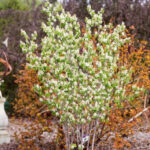 For example, Standing Ovation™ Serviceberry (Amelanchier alnifolia ‘Obelisk’) is a great hedging shrub. It gives multiple seasons of interest with early summer blooms, summer berries for the birds, and beautiful fall colors.
For example, Standing Ovation™ Serviceberry (Amelanchier alnifolia ‘Obelisk’) is a great hedging shrub. It gives multiple seasons of interest with early summer blooms, summer berries for the birds, and beautiful fall colors.
In this particular image, Standing Ovation™ is planted in front of another nativar, Amber Jubilee™ Ninebark, whose bright orange, late spring color really accentuates the white blooms of the serviceberry.
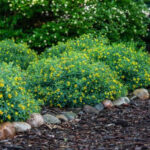 Another great nativar is Cobalt-n-Gold™ Hypericum (Hypericum kalmianum ‘PIIHYP-I’ PP25,318), which maintains a perfectly mounded shape, making it an excellent choice for a low border or to break up a wilder planting design. Its fine-textured leaves are blue-green in color and accented beautifully by bright yellow flowers all summer. This nativar is a pollinator magnet, low maintenance, and excellent as a specimen plant in groups.
Another great nativar is Cobalt-n-Gold™ Hypericum (Hypericum kalmianum ‘PIIHYP-I’ PP25,318), which maintains a perfectly mounded shape, making it an excellent choice for a low border or to break up a wilder planting design. Its fine-textured leaves are blue-green in color and accented beautifully by bright yellow flowers all summer. This nativar is a pollinator magnet, low maintenance, and excellent as a specimen plant in groups.
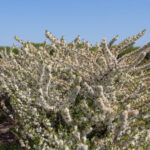 Jade Parade® Sand Cherry (Prunus pumila ‘UCONNPP002’ PP33,014) is another excellent low-growing nativar shrub. It is covered in white flowers in spring, provides structure to the summer garden, and nice fall color. An incredible pollinator plant, Jade Parade is wonderful as a foundation plant. It also is used to prevent soil erosion on a hillside, or as a structural element throughout the landscape. It remains low-growing and provides an interesting texture to the garden.
Jade Parade® Sand Cherry (Prunus pumila ‘UCONNPP002’ PP33,014) is another excellent low-growing nativar shrub. It is covered in white flowers in spring, provides structure to the summer garden, and nice fall color. An incredible pollinator plant, Jade Parade is wonderful as a foundation plant. It also is used to prevent soil erosion on a hillside, or as a structural element throughout the landscape. It remains low-growing and provides an interesting texture to the garden.
By including a wide variety of plants in your garden, you’ll enjoy a long season of blooms — and provide sustenance for pollinators’ survival.
From the winter blooms of hellebores, enjoyed by bees when little else is flowering, to spring-blooming bulbs and shrubs like forsythia, witch hazel and Edgeworthia, to cherry trees and redbuds, early blooms feed pollinators while also delighting gardeners after gray winter days.
Summer continues the show, with perennials and annuals starring in the garden. Even a simple hanging basket of calibrachoa attracts hummingbirds while providing brilliant color to porches or balconies.
As temperatures cool and foliage begins adding drama, late-season flowers, like Solidago (goldenrod), provide an important food source for pollinators. Native goldenrod, which grows beautifully along riverbanks and in meadows, may be too unruly for smaller landscapes. However, nativars like ‘Little Lemon’ provide pollinator benefits in a more compact package.
Even food crops benefit wildlife
Plant extra dill in your herb garden as a host plant for swallowtail butterflies. Let fennel or carrots flower and you’ll attract beneficial predatory insects that help combat pests.
By providing a diverse, interesting mix of plants, you’ll invite wildlife to join you in the garden.
Beginner tip: When selecting plants for your garden, make sure to avoid any plants considered invasive in your region. Check with your local extension agent for a list of invasive plants.

- Create beauty. Gorgeous flowers, lush shrubs, fabulous focal point trees — when creating a garden, the underlying goal is beauty. After all, there’s nothing nicer than wandering through a beautiful space filled with flowers, fragrances, textures and color.
A diverse garden creates a space for creativity, relaxation, entertainment and reflection. Depending on personal preferences, the garden may contain a riot of brilliant, bright blooms, or it might serve as a serene oasis, focusing on calming colors and quiet nooks for reflection.
No matter what style you prefer, your garden space is an intensely personal reflection of you and your lifestyle, favorite colors, ornamental plants and veggies. Designing an aesthetically pleasing garden packed with diverse plants allows you to showcase your creativity. And while it’s good to seek advice from experts, always stay true to your ideals for your garden. You want to enjoy the process and pleasure of creating, planting, tending and nurturing your garden.
“Don’t feel bad if you like a variety of plants and have cultivars and introduced plants in your landscape,” said Pamela J. Bennett, a Master Gardener program director and Extension educator at The Ohio State University. “It doesn’t have to be all or nothing! I love plants of all kinds, including native plants, and, excluding invasive species, I will always have plants that I love that may not be native, but I also incorporate native plants that are suitable for a home landscape and try to maintain them in a manner that is conducive to pollinator health.
“My motto is, ‘Just plant something!’ So many suburban subdivisions have only one to three species of plants installed when they build new homes. If you don’t add pollinator-attractive plants to the landscape, your housing subdivision will be devoid of pollinators.”
Beginner tip: When planning your garden, make a calendar of bloom times and foliage color to ensure you’ll enjoy continuous interest throughout all four seasons.
- Reduce pests and diseases
There’s a reason you shouldn’t put “all your eggs in one basket” when choosing plants for your garden. As farmers and experienced gardeners know, planting only one variety of tomatoes, for instance, might mean you’ll end up with no tomato harvest.
Pests and diseases can easily decimate a monocultural planting, whether it’s an edible garden, roses, annual and perennial flowers, or trees and shrubs. Instead, creating a diverse garden helps ensure that if one variety of plants succumbs to a pest or disease, you’ll still enjoy the dozens of other varieties and species that remain.
Many gardeners relish the interesting colors and fabulous flavor of heirloom tomatoes, for instance. And while some heirlooms grow beautifully, intense heat and humidity can encourage disease that decimates the plants.
An excellent solution involves mixing favorite heirloom plants with disease-resistant hybrids, like Pink Delicious, Chef’s Choice Orange and other All-America Selections winning tomatoes. Diversifying the varieties increases the likelihood of a good tomato harvest.
The same is true with ornamental plants. Diverse varieties help minimize the loss of plants due to rapidly spreading diseases or pest infestations.
“Diversity in the landscape is critical for many reasons, one being this: if you have all of the same plants in your landscape and it’s hit with a pest (insect, disease, rodent, etc.), you lose everything,” Bennett said. “Another reason is that the more diversity you have, the more diversity you attract in terms of pollinators, including birds, bees, butterflies and moths.”
Companion planting flowers in a vegetable garden, for instance, encourages pollinators to visit, helping to boost harvests. Likewise, flowers invite beneficial predatory insects, like ladybugs, who help eliminate pests.
No matter your goal — creating beauty, caring for wildlife, reducing your carbon footprint, maintaining plant health or enjoying delicious garden-to-table meals — you’ll love growing a diverse garden.

